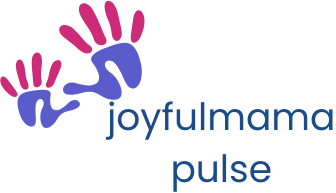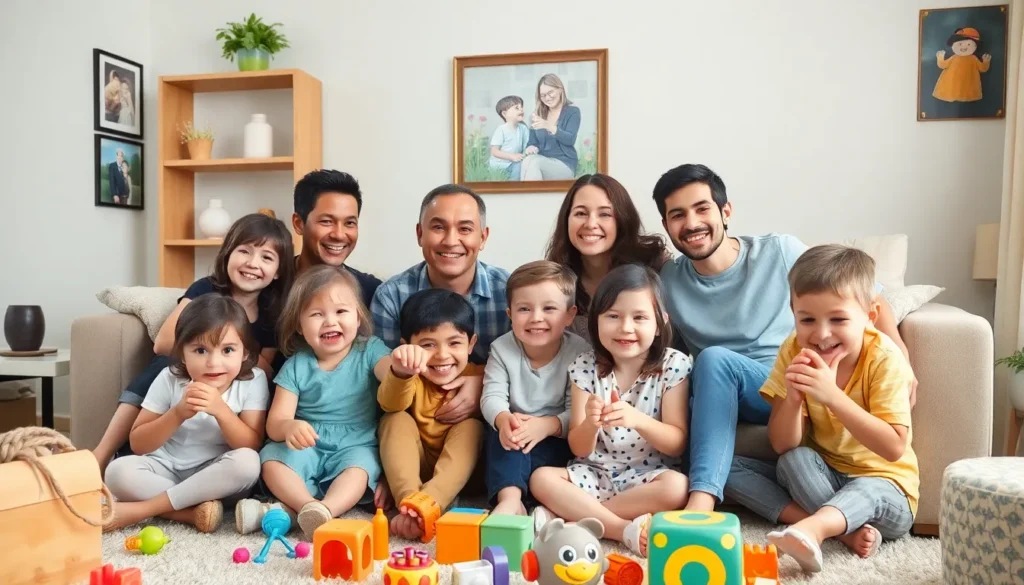Table of Contents
ToggleAdoption and fostering aren’t just about giving kids a new home; they’re about creating a family filled with love, laughter, and maybe a few chaotic moments. Imagine being the superhero who swoops in to change a child’s life, armed with nothing but a warm heart and a slightly questionable sense of humor. It’s a journey that not only transforms the lives of children but also enriches the lives of those who open their hearts and homes.
In a world that often feels divided, fostering and adoption remind us of our shared humanity. It’s a chance to turn a little one’s frown upside down while discovering the joys of bedtime stories and the art of dodging Lego pieces in the dark. Whether you’re considering adoption or fostering, this adventure promises to be a wild ride filled with unforgettable moments and a whole lot of love.
Understanding Adoption and Fostering
Adoption and fostering transform lives, providing children with loving homes and families. These processes create meaningful relationships characterized by love, support, and growth.
Definitions and Key Terms
Adoption refers to the legal process where an individual or couple becomes the permanent parents of a child. The child gains a new family and a sense of belonging. Fostering involves temporarily caring for a child whose biological parents cannot provide for them. Fosters may reunite with their biological families or transition to adoption. Both terms emphasize care, nurturing, and protection for vulnerable children. Other important terms include “foster care,” which represents the system providing temporary homes, and “adoptive parents,” who are the individuals or couples that legally adopt a child.
Differences Between Adoption and Fostering
Adoption entails a permanent commitment, granting parental rights and responsibilities to the adoptive parents. In this arrangement, the child usually becomes a legal member of the family. Fostering, in contrast, serves as a temporary caregiving situation, focusing on the child’s safety and well-being until a more permanent solution emerges. Often, foster care emphasizes family reunification, which may lead children back to their biological parents. Another key difference lies in the eligibility requirements; adoption generally requires a more extensive screening process than fostering. Understanding these differences plays a crucial role in navigating both processes effectively.
The Adoption Process

The adoption process requires careful consideration and a series of structured steps to ensure the best outcomes for children. Understanding these elements helps prospective parents navigate their journey effectively.
Eligibility and Requirements
Eligibility criteria for adoption can vary by state and agency. Many agencies require prospective parents to be at least 21 years old. Additionally, they need to demonstrate financial stability, suitable living arrangements, and a willingness to complete necessary training. Background checks, including criminal and child abuse history, are mandatory for all applicants. Agencies may also consider marital status, although single individuals can adopt in most jurisdictions. Meeting these requirements ensures that children are placed in safe and loving environments.
Steps Involved in Adoption
Several steps are involved in the adoption process. First, prospective parents typically complete a home study, which evaluates their home and family dynamics. Next, they submit an adoption application to their chosen agency. Following approval, individuals receive training on adoption and parenthood, preparing them for future challenges. Then, matched families will engage in the placement process, where children are introduced into their new homes. After a placement period, the next step includes finalizing the adoption in court, transitioning into a permanent family arrangement. Each step plays a crucial role in creating a stable foundation for adopted children.
The Fostering Experience
Fostering offers a unique opportunity for families to provide care and support to children in need. Understanding the types of foster care and challenges faced by foster families highlights the complexity of this experience.
Types of Foster Care
Different types of foster care include traditional, kinship, treatment, and emergency care. Traditional foster care involves placing children in a family-like environment. Kinship foster care occurs when relatives take in children, offering familiarity and connection. Treatment foster care gives specialized support for children with emotional or behavioral issues. Emergency foster care provides immediate placements for children in crises. Each type addresses the varying needs of children and supports their well-being.
Challenges Faced by Foster Families
Foster families encounter various challenges during their caregiving journey. Emotional stress often arises as children may face trauma or attachment issues. Balancing the needs of biological children and foster children can create tension in the household. Navigating the complexities of the foster care system requires continuous communication with social workers and other professionals. Financial constraints occasionally add pressure, as foster families may not receive enough financial support. These challenges highlight the resilience and commitment of foster families in making a lasting impact.
Benefits of Adoption and Fostering
Adoption and fostering offer numerous advantages that enrich the lives of both children and families. The positive outcomes extend beyond mere provision of a home, fostering a nurturing environment.
Emotional and Social Benefits
Emotional stability occurs through the formation of secure attachments, granting children a sense of safety. Social skills improve as children engage with their new families and peer groups, enhancing their ability to interact effectively. Resilience develops, helping children navigate future challenges. Personal growth follows as caregivers also experience heightened compassion and empathy, transforming family dynamics. Connections strengthen between members, leading to a shared sense of purpose and belonging.
Long-Term Impact on Children
Long-term outcomes for children reflect significant improvements in mental health and well-being. Adoption reduces the likelihood of experiencing homelessness and poverty. Foster care allows for critical life skills development, equipping children for independence. Educational achievements often increase, resulting in higher graduation rates. Lifelong relationships form, providing emotional support throughout adulthood. These positive changes contribute to a brighter future for children, emphasizing the transformative power of adoption and fostering.
Adoption and fostering create profound impacts that extend far beyond the immediate act of providing shelter. They foster deep connections and emotional growth for both children and caregivers. Through these experiences, families are built on love and resilience, transforming lives in the process.
The journey may be challenging but the rewards are immeasurable. Children gain a sense of belonging while caregivers experience personal fulfillment and growth. As society recognizes the importance of these processes, the hope for a brighter future for vulnerable children continues to grow. Embracing adoption and fostering not only changes individual lives but also strengthens communities, highlighting the shared humanity that binds us all.





